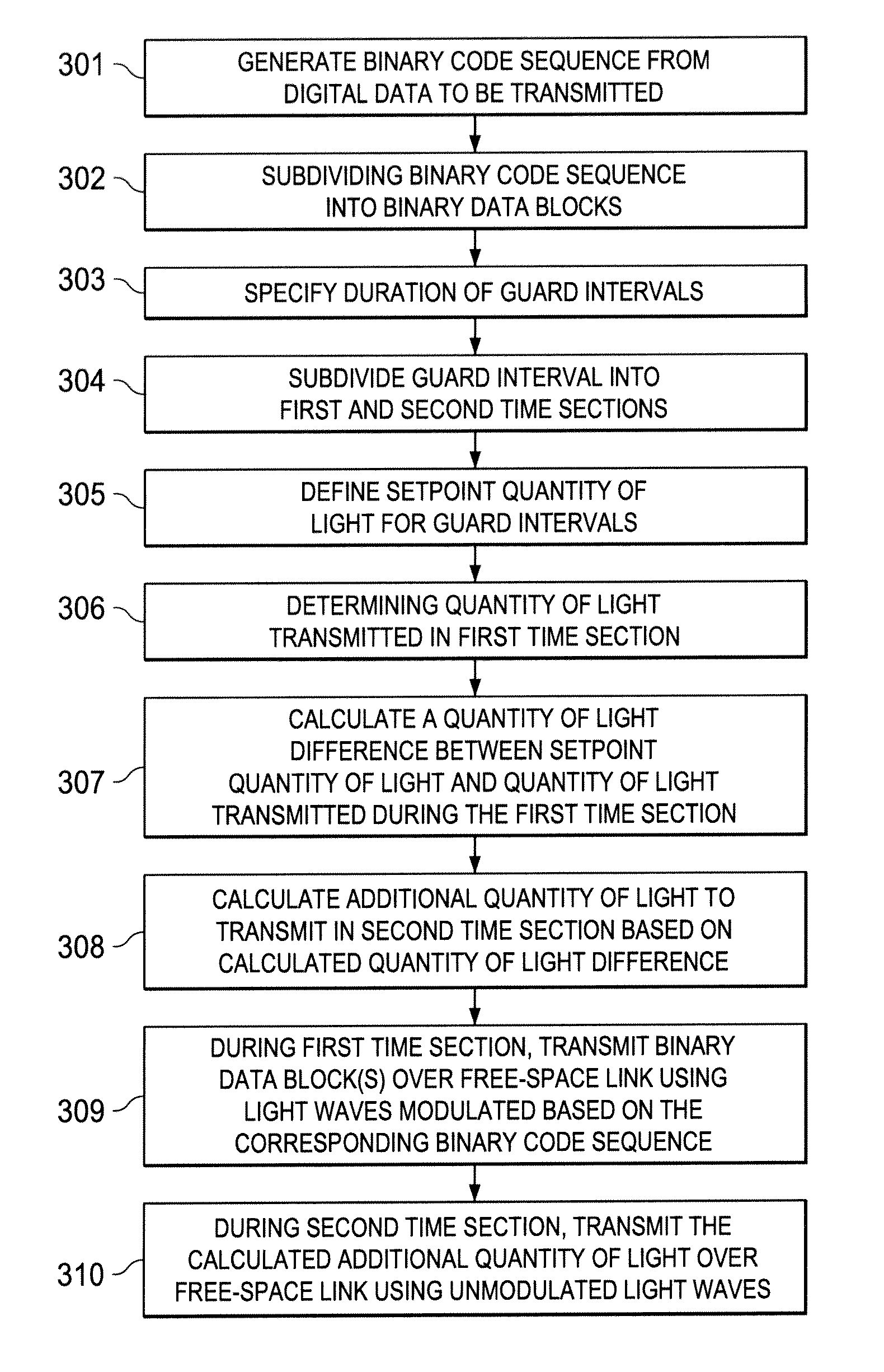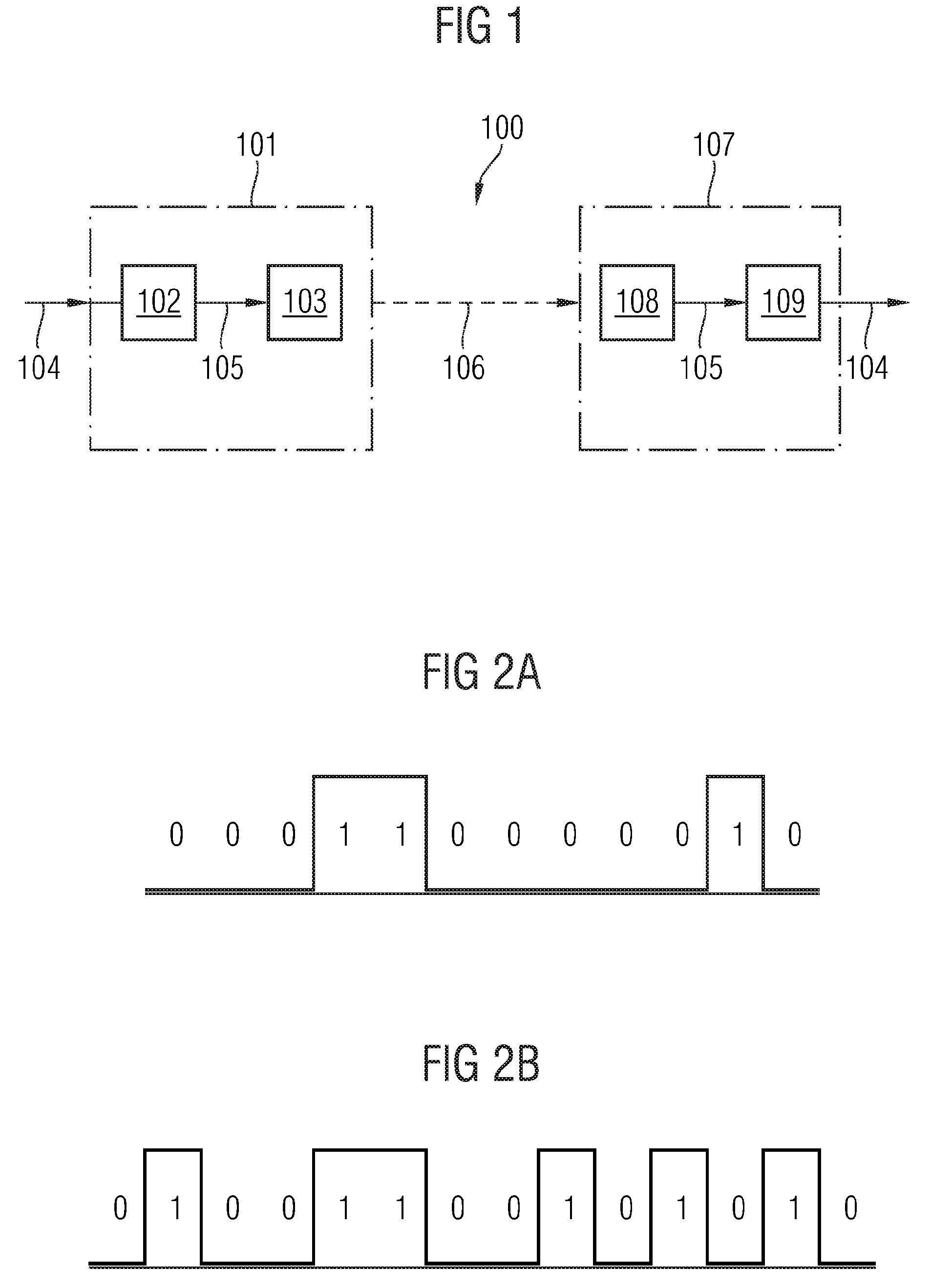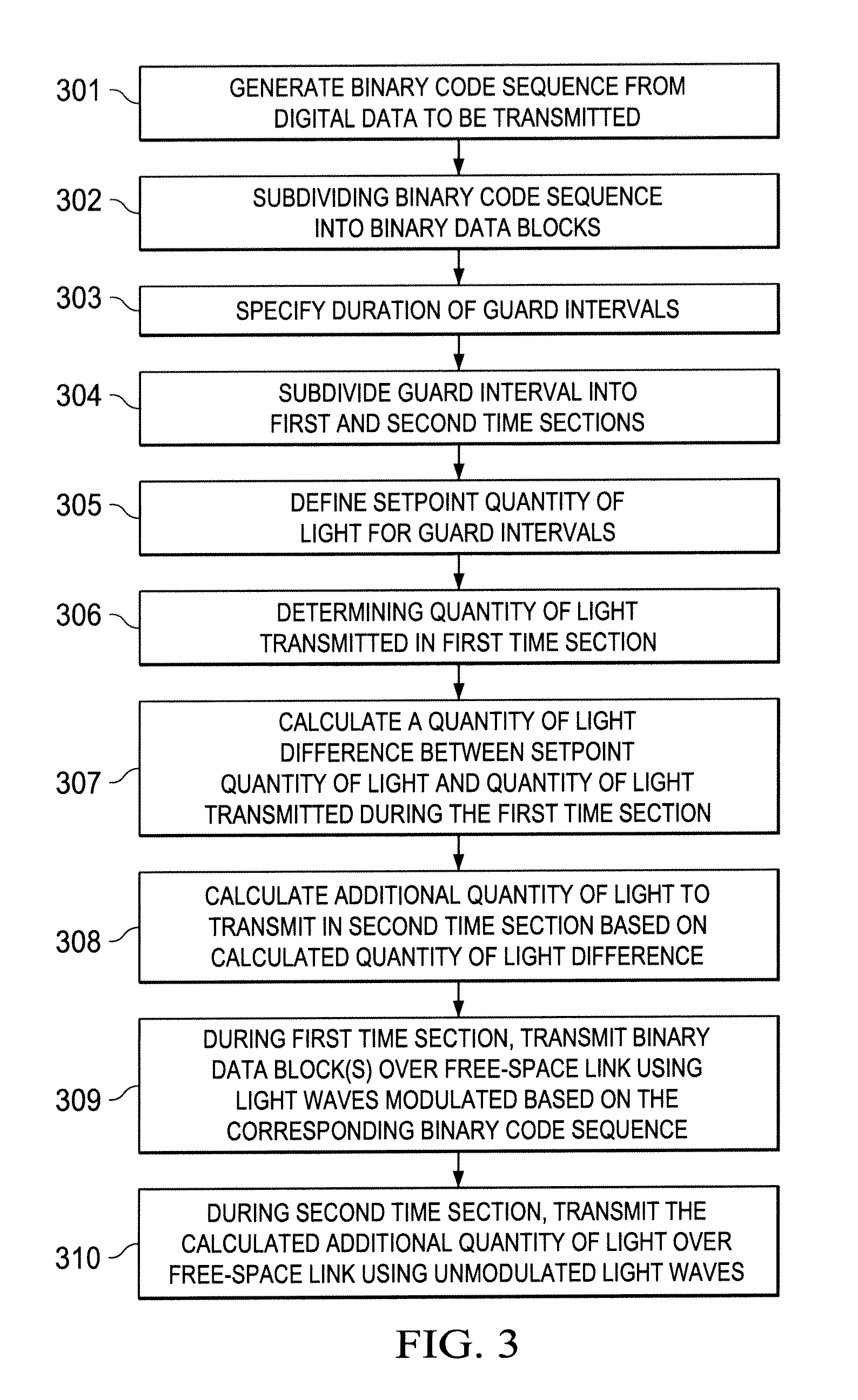Method for non-flutter transmission of digital data in a free-space optical transmission system
a free-space optical transmission and digital data technology, applied in the field of communication, can solve the problems of triggering epileptic fits, affecting the quality of digital data transmission, and often lacking the desirable degree of flexibility of wireline optical transmission systems
- Summary
- Abstract
- Description
- Claims
- Application Information
AI Technical Summary
Benefits of technology
Problems solved by technology
Method used
Image
Examples
Embodiment Construction
[0018]The various embodiments show, in generic terms, a method for transmitting digital data in a free-space optical transmission system in which in particular visible light waves are amplitude- or intensity-modulated with a binary code sequence generated from the digital data, and then transmitted over a free-space optical link between a transmitter and a receiver. A binary code sequence is defined as a sequence of binary values encoded by means of an encoding scheme.
[0019]According to a first aspect, the method according to various embodiments is essentially characterized in that the binary code sequence is generated such that a light wave modulation frequency determined by the binary code sequence, i.e. a rate of change of the signal levels (light intensities) of the light waves, is at least 70 hertz, preferably at least 100 hertz. The figure in hertz corresponds to signal level changes per second. The bit period, i.e. the time available for the optical transmission of a binary v...
PUM
 Login to View More
Login to View More Abstract
Description
Claims
Application Information
 Login to View More
Login to View More - R&D
- Intellectual Property
- Life Sciences
- Materials
- Tech Scout
- Unparalleled Data Quality
- Higher Quality Content
- 60% Fewer Hallucinations
Browse by: Latest US Patents, China's latest patents, Technical Efficacy Thesaurus, Application Domain, Technology Topic, Popular Technical Reports.
© 2025 PatSnap. All rights reserved.Legal|Privacy policy|Modern Slavery Act Transparency Statement|Sitemap|About US| Contact US: help@patsnap.com



